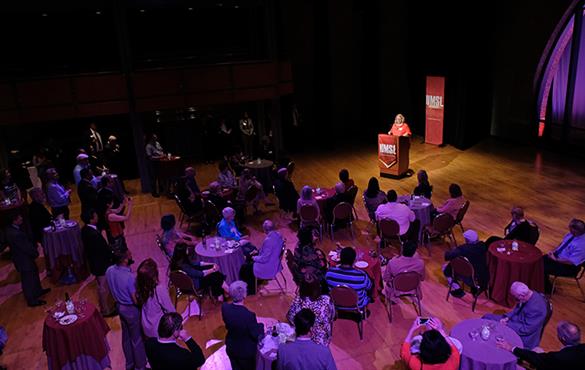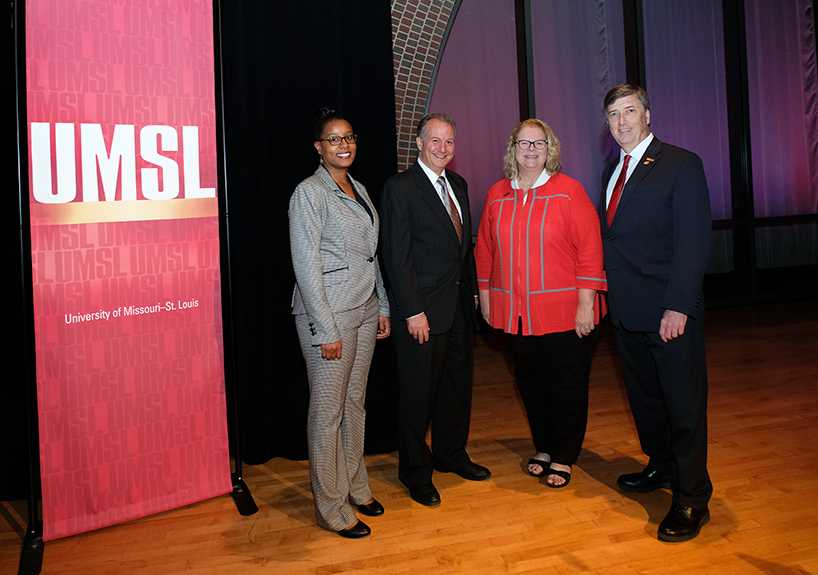Engineering celebrates 25 years of transformative education
UMSL/Washington University in St. Louis Joint Undergraduate Engineering Program leaders and alumni reflect on the program's regional impact

There’s possibility that Evelyn Bailey Moore might not have existed – literally – without the University of Missouri–St. Louis. Engineering in the greater St. Louis region, on the other hand, would still be here if her parents hadn’t met their freshman year at UMSL.
But it would be markedly changed.
That’s because their daughter, Moore, 2003 graduate, now oversees more than 700 engineers at Boeing, where she’s the F/A-18 and EA-18G director of engineering and chief engineer. She impacts the region’s economic future on a daily basis.
She’s one of many alumni who affect the greater St. Louis area thanks to their education in the UMSL/Washington University in St. Louis Joint Undergraduate Engineering Program.
She shared her success story on Thursday as part of the joint program’s 25th anniversary celebration, which brought approximately 150 alumni, students, staff and faculty to the Lee Theater in the Blanche M. Touhill Performing Arts Center to celebrate innovative engineering education.
In joint engineering, students study pre-engineering at UMSL and then transition to WUSTL where they take upper engineering course, explained Joseph O’Sullivan, joint engineering dean. Students pay UMSL tuition throughout. The upper engineering classes take place at night so that students can work or take intern or co-op positions during the day.

“The joint engineering program gave me the best of both worlds at an affordable tuition,” Moore said. “I received two co-ops through the program that allowed me to work in the engineering field. The joint engineering program equipped me with the foundation of engineering principles with the curriculum and real-world experience with jobs.”
Moore was one of four speakers, a group that also included O’Sullivan, UMSL Interim Chancellor and Provost Kristin Sobolik and Aaron Bobick, WashU dean of the James McKelvey School of Engineering.
The joint program first came to be in 1993, explained Sobolik, out of a desire to provide a high-quality, affordable option for place-bound St. Louis-area students. Today, the program’s students are 54 percent women, 27 percent minority and 40 percent Pell Grant eligible.
Moreover, with 73 percent of alumni staying in St. Louis after graduation, the program has shepherded growth for the region while also providing opportunities for individuals.
“The joint engineering program is truly a part of transforming lives through educational opportunity,” Sobolik said. “In fact, 1,046 graduates quite literally go to work every day building our city, and they establish a new legacy for themselves and their families while they do it.”
Bobick closed out the program by pointing out the continued need for the program alumni.
One area of opportunity comes from places such as the Cortex Innovation District, which now houses more than 360 companies and 6,000 jobs.
“Not only do these companies need technical talent themselves, but creating the infrastructure to support these efforts requires engineering,” he said. “I believe the future is incredibly bright for our region and for the graduates of this joint program. They will continue to be a key to that success.”



